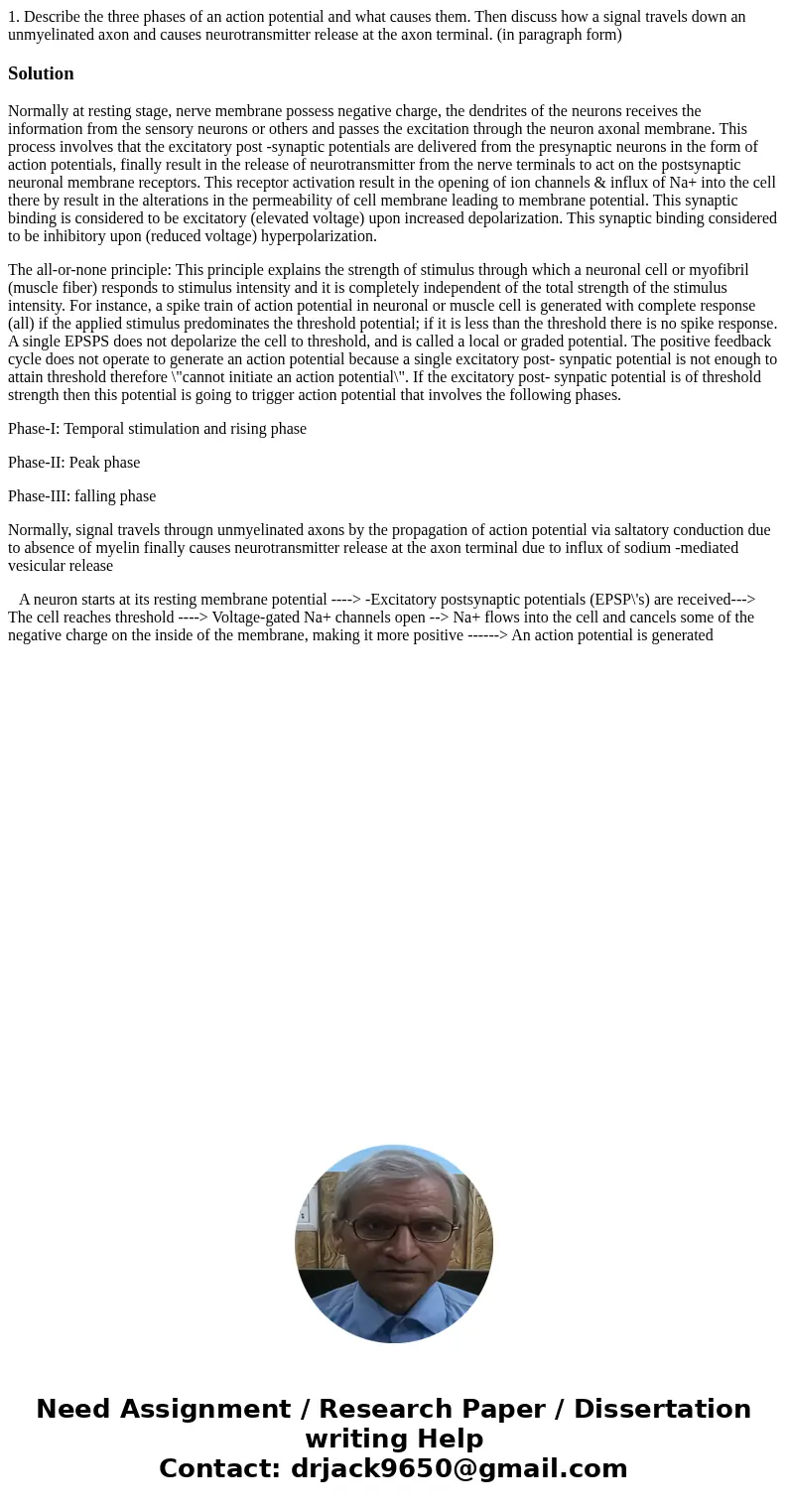1 Describe the three phases of an action potential and what
1. Describe the three phases of an action potential and what causes them. Then discuss how a signal travels down an unmyelinated axon and causes neurotransmitter release at the axon terminal. (in paragraph form)
Solution
Normally at resting stage, nerve membrane possess negative charge, the dendrites of the neurons receives the information from the sensory neurons or others and passes the excitation through the neuron axonal membrane. This process involves that the excitatory post -synaptic potentials are delivered from the presynaptic neurons in the form of action potentials, finally result in the release of neurotransmitter from the nerve terminals to act on the postsynaptic neuronal membrane receptors. This receptor activation result in the opening of ion channels & influx of Na+ into the cell there by result in the alterations in the permeability of cell membrane leading to membrane potential. This synaptic binding is considered to be excitatory (elevated voltage) upon increased depolarization. This synaptic binding considered to be inhibitory upon (reduced voltage) hyperpolarization.
The all-or-none principle: This principle explains the strength of stimulus through which a neuronal cell or myofibril (muscle fiber) responds to stimulus intensity and it is completely independent of the total strength of the stimulus intensity. For instance, a spike train of action potential in neuronal or muscle cell is generated with complete response (all) if the applied stimulus predominates the threshold potential; if it is less than the threshold there is no spike response. A single EPSPS does not depolarize the cell to threshold, and is called a local or graded potential. The positive feedback cycle does not operate to generate an action potential because a single excitatory post- synpatic potential is not enough to attain threshold therefore \"cannot initiate an action potential\". If the excitatory post- synpatic potential is of threshold strength then this potential is going to trigger action potential that involves the following phases.
Phase-I: Temporal stimulation and rising phase
Phase-II: Peak phase
Phase-III: falling phase
Normally, signal travels througn unmyelinated axons by the propagation of action potential via saltatory conduction due to absence of myelin finally causes neurotransmitter release at the axon terminal due to influx of sodium -mediated vesicular release
A neuron starts at its resting membrane potential ----> -Excitatory postsynaptic potentials (EPSP\'s) are received---> The cell reaches threshold ----> Voltage-gated Na+ channels open --> Na+ flows into the cell and cancels some of the negative charge on the inside of the membrane, making it more positive ------> An action potential is generated

 Homework Sourse
Homework Sourse